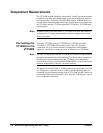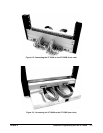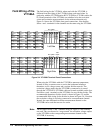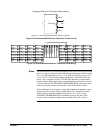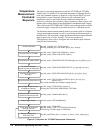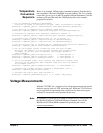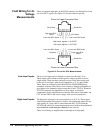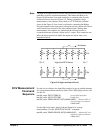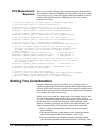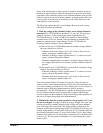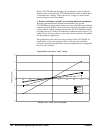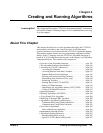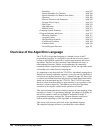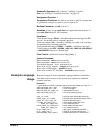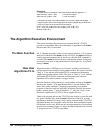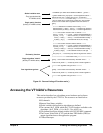
178 Advanced Programming with the VT1529B Chapter 5
DCV Measurement
Sequence
Below is an example VXIplug&play command sequence. Note that this is
not executable; it has been simplified for easier reading. The C++ example
source file (dcv.cpp) is on the CD supplied with the instrument. View the
readme.txt file provided with the VXIplug&play driver for example
program file location.
/* This shows measuring low-level inputs on channels 10000-10005 */
/* and high-level inputs on channels 10008-10015 */
/* optionally set VT1529B input filters (2, 10 or 100 Hz) */
errStatus = hpe1422_cmd(vi, "inp:filt:freq 10,(@10000:10005)");
errStatus = hpe1422_cmd(vi, "inp:filt:stat on,(@10000:10005)");
/* set up channels 10000-10005 for DCV, low level inputs */
errStatus = hpe1422_cmd(vi, "sens:func:volt auto,(@10000:10005)");
/* set up channels 10008-10015 for DCV, high level inputs */
errStatus = hpe1422_cmd(vi, "sens:func:hvol auto,(@10008:10015)");
/* set up the scan list to include the DCV channels */
errStatus = hpe1422_cmd(vi,"rout:seq:def (@10000:10005,10008:10015)");
/* set up the trigger system to make one scan for each trigger.
Note that the default is one scan per trigger and trigger source
is TIMer, so we only have to INITiate the trigger system to
take readings.
errStatus = hpe1422_cmd(vi,"trig:coun 1"); /* *RST default */
errStatus = hpe1422_cmd(vi,"trig:sour tim"); /* *RST default */
errStatus = hpe1422_cmd(vi,"arm:sour imm"); /* *RST default */
/* set up the sample timer. This controls the channel-to-channel scan
rate and can be important when channels need more than the default
40 us sample time. */
errStatus = hpe1422_cmd(vi,"samp:tim 40e-6"); /* *RST default */
/* INITiate the trigger system to execute a measurement scan */
errStatus = hpe1422_cmd(vi,"init:imm");
/* retrieve one scan’s data from the FIFO */
/* Note: if you’re not doing any measurements that require post-processed
EU conversions, you can use hpe1422_readFifo_Q instead */
errStatus = hpe1422_readFifoPost_Q(vi, 1, 0, 65024, f64_array);
Settling Time Considerations
Channel settling interactions are present in every scanning system. A
significant engineering effort has been applied to minimize these interactions,
however, if the correct situation is present, errors caused by settling can be
detected. This section presents a brief tutorial on settling errors and explains
how to control the source of these errors.
Settling errors occur when the voltage value of one channel seems to leak
into successive channels being scanned. This can be called switching
crosstalk. Traditional crosstalk occurs when one input signal interferes with
another input and is related to the frequency of the interfering signal.
However, switching crosstalk is not related to the signal frequency, but
rather is a function of the following factors which can be controlled:
• The dc voltage of the interfering channel relative to the channel
being measured.
• The amount of time the system remains on the interfering channel
before measurement of the desired channel (“soak” time).
• The time elapsed between switching from the interfering channel
to the actual measurement on the desired channel (“discharge” time).



